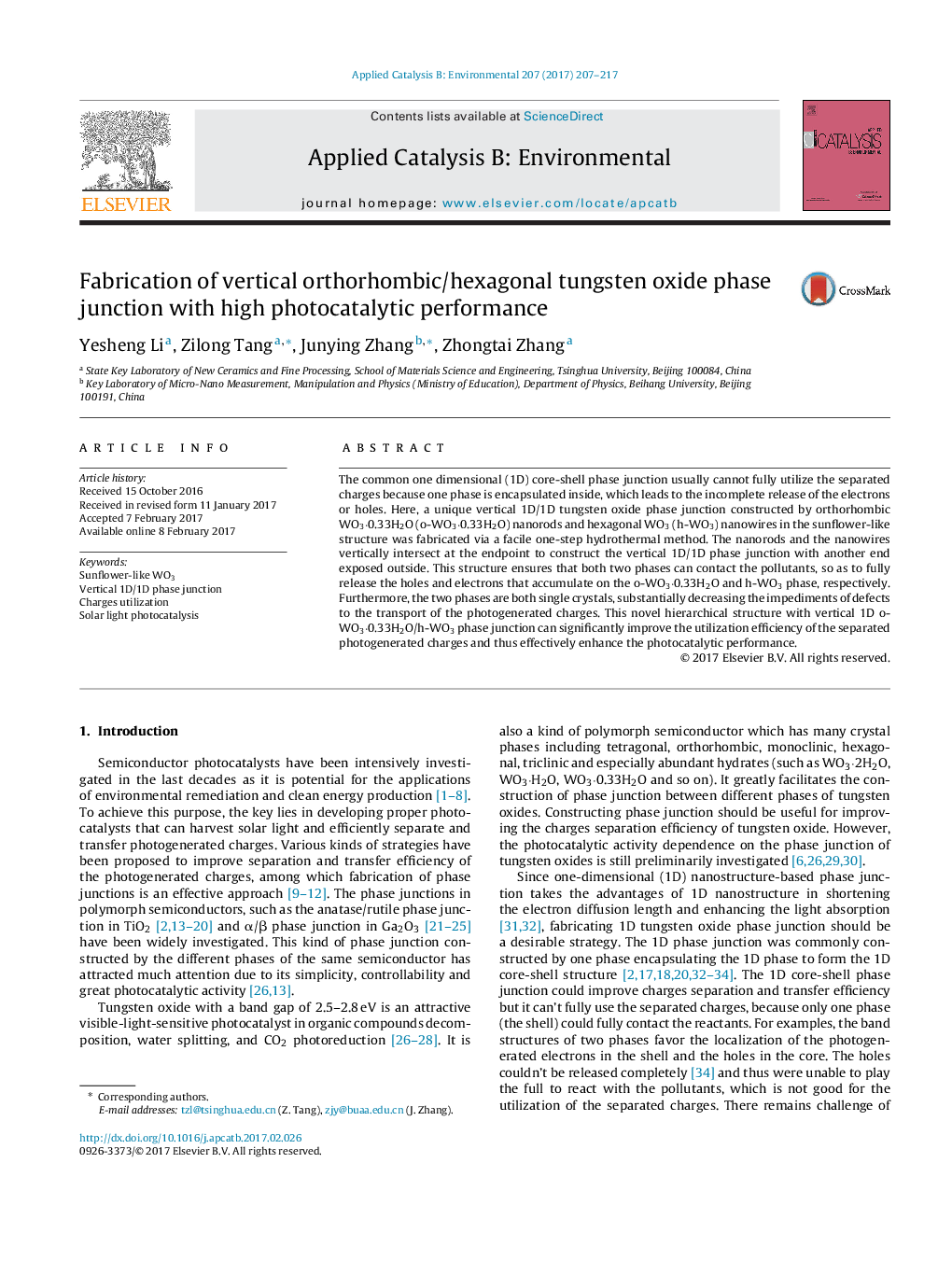| Article ID | Journal | Published Year | Pages | File Type |
|---|---|---|---|---|
| 6454066 | Applied Catalysis B: Environmental | 2017 | 11 Pages |
•A vertical 1D/1D WO3 phase junction was fabricated in the sunflower-like structure.•The high utilization of the holes and electrons is due to the fully released charges.•Two phases are single crystals which further accelerate the transfer of the charges.•High photocatalytic performance was achieved in the sample with the phase junction.
The common one dimensional (1D) core-shell phase junction usually cannot fully utilize the separated charges because one phase is encapsulated inside, which leads to the incomplete release of the electrons or holes. Here, a unique vertical 1D/1D tungsten oxide phase junction constructed by orthorhombic WO3·0.33H2O (o-WO3·0.33H2O) nanorods and hexagonal WO3 (h-WO3) nanowires in the sunflower-like structure was fabricated via a facile one-step hydrothermal method. The nanorods and the nanowires vertically intersect at the endpoint to construct the vertical 1D/1D phase junction with another end exposed outside. This structure ensures that both two phases can contact the pollutants, so as to fully release the holes and electrons that accumulate on the o-WO3·0.33H2O and h-WO3 phase, respectively. Furthermore, the two phases are both single crystals, substantially decreasing the impediments of defects to the transport of the photogenerated charges. This novel hierarchical structure with vertical 1D o-WO3·0.33H2O/h-WO3 phase junction can significantly improve the utilization efficiency of the separated photogenerated charges and thus effectively enhance the photocatalytic performance.
Graphical abstractFigure optionsDownload full-size imageDownload high-quality image (130 K)Download as PowerPoint slide
